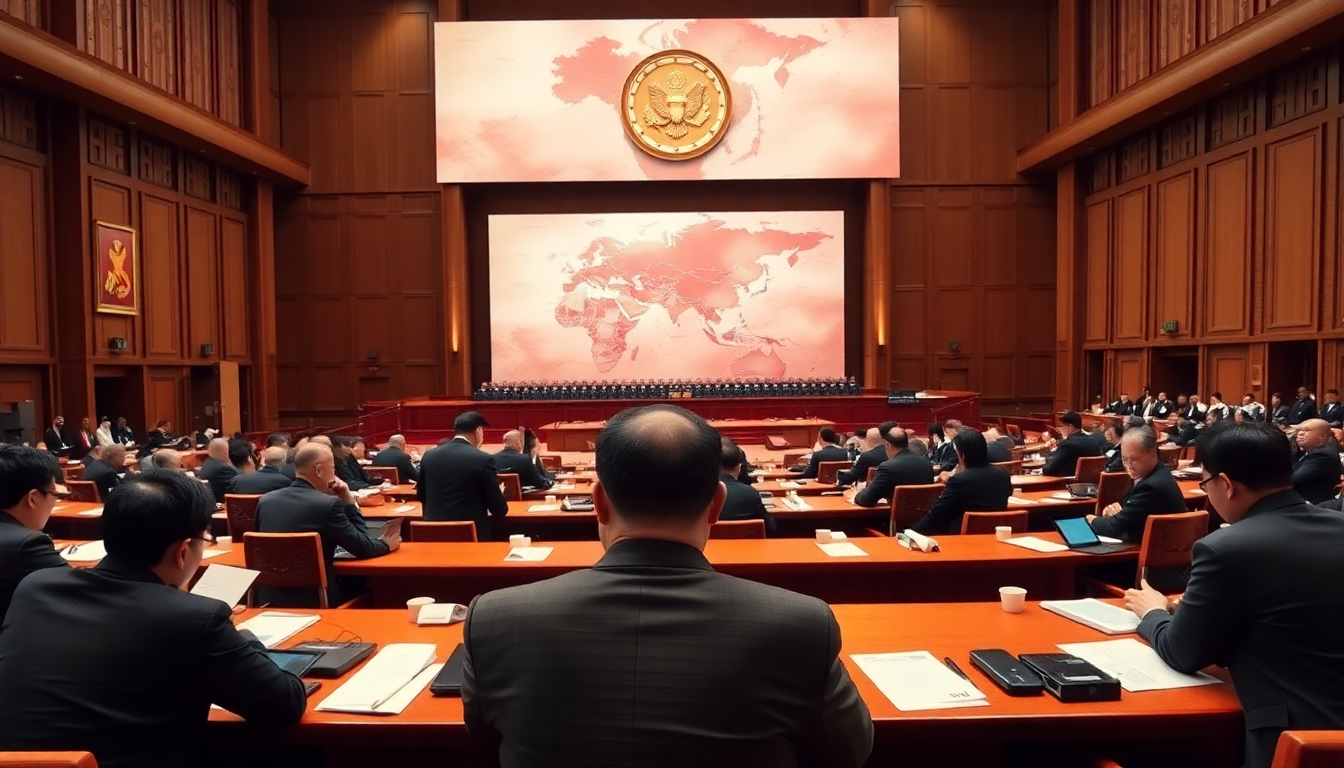Table of Contents
The upcoming fourth plenum of the Chinese Communist Party is set to be a game-changer, one that will steer the nation’s course for the next five years. As party leaders gather in Beijing, there’s a buzz of anticipation about which new faces might join the Central Committee and what vital discussions will unfold around the next five-year plan.
This isn’t just another meeting; it’s a moment where economic, political, and social objectives will be scrutinized, all while addressing the ongoing tensions with the United States. Can you feel the weight of the moment?
Why the Fourth Plenary Session Matters
Slated for October, this fourth plenum couldn’t come at a more crucial time for China. The nation is under increasing pressure both at home and from abroad. With over 370 elite members from the Central Committee in attendance, the focus will be on crafting a comprehensive five-year plan to guide the country from 2026 to 2030.
This period is particularly significant as it aligns with President Xi Jinping’s vision for China’s future—one that calls for a strong response to external challenges, especially the ongoing trade and tech rivalry with the U.S. How will these power dynamics shape China’s path?
During a recent Politburo meeting, leaders outlined the framework for the upcoming plenum, showcasing their commitment to a structured and strategic approach.
Xi Jinping emphasized that this session is a golden opportunity for the party to reassess its goals in light of the changing global landscape. What could these adjustments mean for the average citizen?
What to Expect: Key Outcomes and Strategic Directions
One of the major outcomes anticipated from this fourth plenum is the endorsement of the 15th five-year plan. This plan needs to pass through a plenary session approval before it’s put forward for final endorsement in March at the annual legislative session.
This meticulous process highlights the Communist Party’s careful approach in shaping China’s economic and social policies. Interestingly, the party kicked off a month-long public consultation in May, reflecting a growing trend of incorporating public opinion into its strategic planning. Is this a sign of evolving governance?
China faces a myriad of external uncertainties, particularly concerning its trade relationships and tech developments with the United States. While there have been some agreements aimed at avoiding a full-blown trade war, many analysts remain skeptical about how long these solutions will last. The competition between these two global powers seems poised to intensify, which will inevitably influence China’s policy decisions and economic strategies. How will this rivalry impact everyday life in China?
Looking Ahead: Implications for China and Global Relations
As the plenum draws near, the decisions made will resonate well beyond China’s borders. The outcomes could redefine China’s economic model, shifting focus toward self-reliance in technology and innovation while deftly navigating the complexities of international relations. The emphasis on a comprehensive five-year plan suggests that China is gearing up to take a more assertive stance on the global stage, aiming to strengthen its economic resilience amid potential challenges. Are we ready for a more assertive China?
In summary, the fourth plenum stands as a pivotal moment for China as it charts its course in an increasingly competitive global environment. The decisions made here will likely shape not just the internal dynamics of the Communist Party but also the broader geopolitical landscape. As nations watch closely, how will China adapt to its challenges and seize new opportunities?





